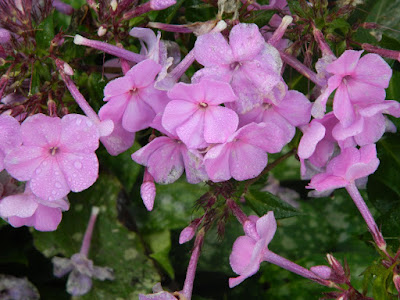'Now Autumn's fire burns slowly along the woods'
-- William Allingham
At sunrise today the trees beyond the barn were on fire with autumn colors; the fall leaves are stunning this year. A trip to the grocery store, a task I normally hate, becomes a visual delight and makes me feel blessed to have settled in such a beautiful part of the world.
 |
| Fall in my neighborhood. |
We made several trips to the Lehigh Valley this week for doctors' appointments (one of the necessities of old age.) Each time we emerged from the Lehigh tunnel into our beloved Pocono Mountains I was overwhelmed by their magnificent beauty.
 |
| Leaving the Lehigh tunnel and entering the Poconos. |
Even before the leaves peaked in color, the trees were beautiful in Quiet Valley. We visited the historical farm there for the 41st annual harvest festival earlier this month.
 |
| Quiet Valley Living Historical Farm |
Quiet Valley Living Historical Farm, just a few miles from our home, is a 19th century Pennsylvania German farm dedicated to the preservation and education of rural farm life. Period-dressed "family" members re-enact the life of the original Pennsylvania German family who lived on the farm from the 1760s to 1913. The theme of this year's harvest festival was 'Green is Our Valley -- Homesteading." In addition to demonstrations and displays dealing with the theme, there were plenty of traditional skills and heritage crafts to see such as spinning, weaving, broom making, scrapple making, apple butter making, basket making, and candle making.
 |
| Basket Weaving |
I learned about the flax plant. Flax, one of the most important crops to early American farmers and to the economy of our emerging nation, was grown for linseed oil and for making linen. Incidentally, garden flax is a larval food source for the variegated fritillary butterfly.
 |
| The humble Flax plant Linum Usitatissimum |
 |
| Making tow from flax to be turned into twine. |
This year, the farm ladies were excited to dye their linen with cochineal, a red dye, that they hadn't used before. To make the fabric colorfast, they treated it with mordant, a mineral that helps dye adhere. They used indigo that they grew themselves to dye wool from the farm. Onion skins and marigolds produced yellow dye and madder root produced colors from orange through peach and red.
 |
| Drying newly dyed skeins of wool. |
 |
| Beautiful colors. |
They showcased vegetables and herbs for their home remedies, such as allium (onions and garlic) used to treat wounds, skin infections and insect bites.
We bumped into old friends, Janet and Larry. Janet was carrying a beautiful bouquet of the aromatic herb 'Sweet Annie.' There were herbs, dried flowers and wreaths for sale. I purchased a wreath for my potting shed and posted a picture of it last time.
 |
| Sweet Annie Artemisia |
 |
| Next to the farmhouse we paused to listen to 18th century music. |
The 142nd Pennsylvania Volunteer Infantry re-enactors portrayed the everyday life of soldiers in the 19th century, while the New Jersey Frontier Guard showed French and Indian war soldiers trekking through the farm throughout the event.
We spent several hours at the farm, culminating in the enjoyment of homemade ice cream. As we drove the short distance home through the lovely PA countryside, H.H. and I agreed it was a perfect day.
'Brilliantly tinted foliage dances along outstretched branches ... made all the more gorgeous by glimpses of contrasting green in the grass beneath and roughly textured, lichened bark of adjoining trees.'
-- Malcom Hillier
 |
| Rescued from the first hard frost. |
Where-ever you live in the world, I hope your current season is as beautiful as mine!
Pamela x
 |
| Working brick oven at Quiet Valley Farm |
~~ I love reading your comments. I hope you leave one so I’ll know you visited!
I look forward to visiting your blog in return.











































